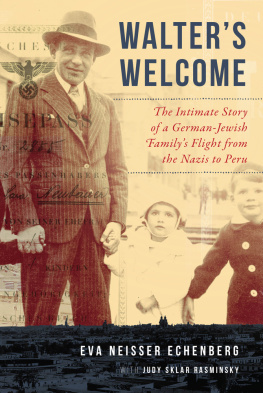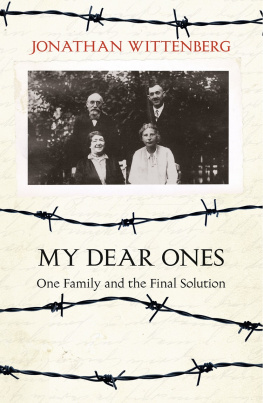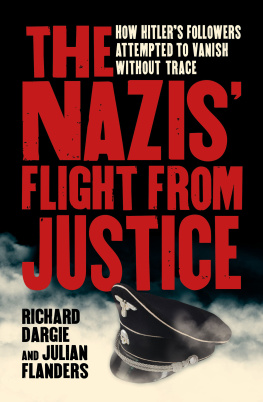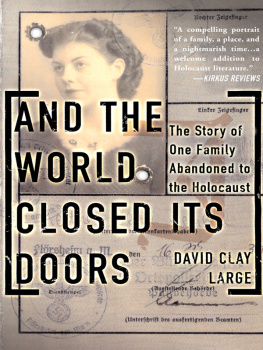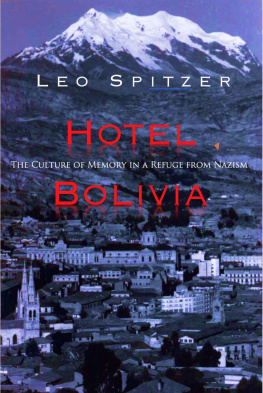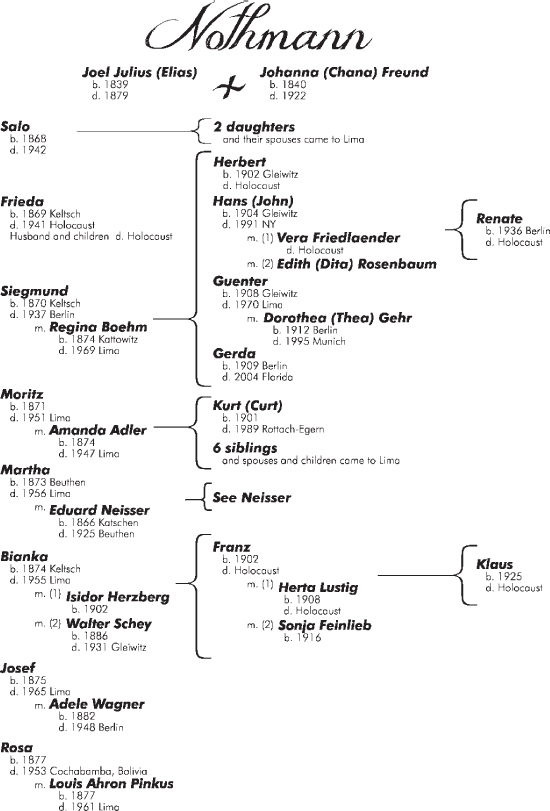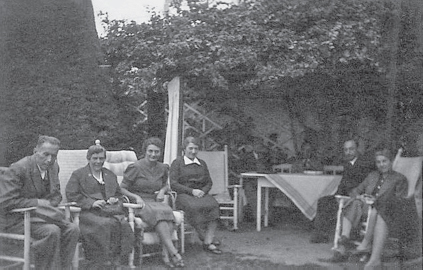Eva Neisser Echenberg - Walters Welcome: The Intimate Story of a German-Jewish Familys Flight from the Nazis to Peru
Here you can read online Eva Neisser Echenberg - Walters Welcome: The Intimate Story of a German-Jewish Familys Flight from the Nazis to Peru full text of the book (entire story) in english for free. Download pdf and epub, get meaning, cover and reviews about this ebook. year: 2018, publisher: Skyhorse, genre: Home and family. Description of the work, (preface) as well as reviews are available. Best literature library LitArk.com created for fans of good reading and offers a wide selection of genres:
Romance novel
Science fiction
Adventure
Detective
Science
History
Home and family
Prose
Art
Politics
Computer
Non-fiction
Religion
Business
Children
Humor
Choose a favorite category and find really read worthwhile books. Enjoy immersion in the world of imagination, feel the emotions of the characters or learn something new for yourself, make an fascinating discovery.
- Book:Walters Welcome: The Intimate Story of a German-Jewish Familys Flight from the Nazis to Peru
- Author:
- Publisher:Skyhorse
- Genre:
- Year:2018
- Rating:4 / 5
- Favourites:Add to favourites
- Your mark:
Walters Welcome: The Intimate Story of a German-Jewish Familys Flight from the Nazis to Peru: summary, description and annotation
We offer to read an annotation, description, summary or preface (depends on what the author of the book "Walters Welcome: The Intimate Story of a German-Jewish Familys Flight from the Nazis to Peru" wrote himself). If you haven't found the necessary information about the book — write in the comments, we will try to find it.
Walters Welcome is the story of Walter Neisser and the more than fifty members of his family he helped to escape Nazi Germany. The story is told through the letters of the Neisser family, which have been meticulously translated and arranged by Walters niece, Eva, who also provides moving historical contextualization and commentary. After fleeing Germany, the Neissers resettled in Peru. However, their flight was neither easy nor seamless. Walter worked tirelessly to provide the resources and guidance necessary for the many members of the family to escape, but communications to Europe were frazzled and travel off the continent became increasingly impossible with each passing day, requiring extraordinary will and coordination to contact the correct officials and receive the necessary documentation. The familys letters reveal the toll these efforts put on them and the challenges of waiting and surviving in a foreign land as they tried to hold together.
The story of Jewish escapees to Latin America has only recently begun to be widely explored. This memoir-in-letters explores the difficulties of daily life in this little explored context, as the Neisser family and many other escaped Jews adjusted to a new home and tried to build a new life in the shadow of the many horrific things happening back in the land theyd left behind.
A fascinating and little-known account . . . I am still digesting the books richesand sharing it with others. Walter Laqueur, historian and bestselling author of Putinism: Russia and Its Future with the West
Eva Neisser Echenberg: author's other books
Who wrote Walters Welcome: The Intimate Story of a German-Jewish Familys Flight from the Nazis to Peru? Find out the surname, the name of the author of the book and a list of all author's works by series.

